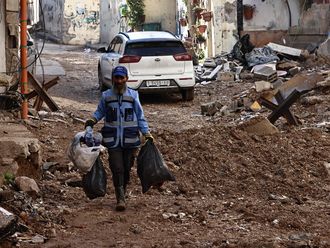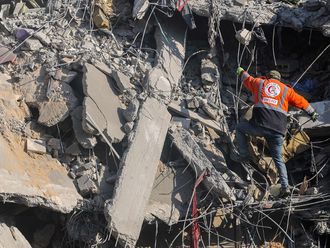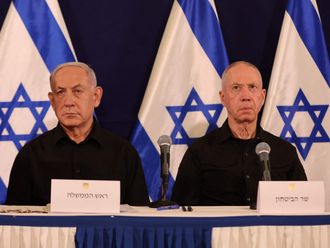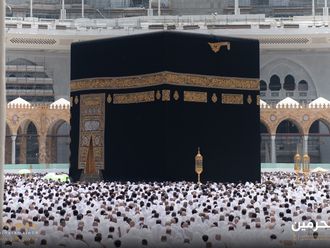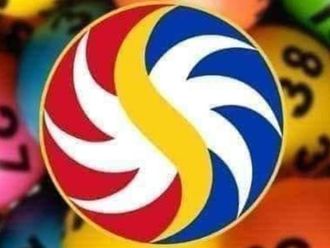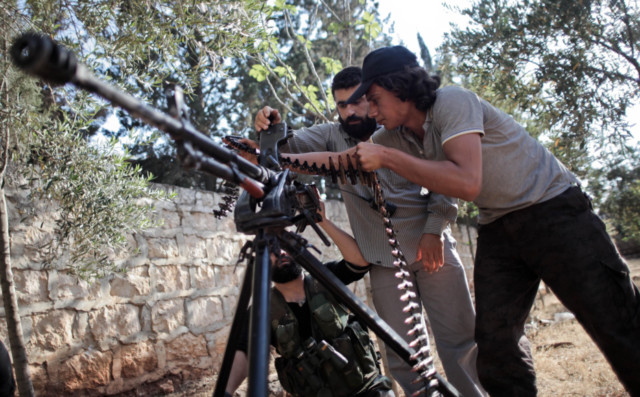
Beirut: Although President Barack Obama opted for a “relentless” war to “degrade and ultimately destroy” the nascent Islamic State of Iraq and the Levant (Isil) in his Wednesday address, and while he secured a coalition of Arab and Western powers to launch sustained assaults against extremist forces in Iraq and Syria, seasoned observers believed much of what was now required in terms of sacrifice could have easily been avoided had Washington and its allies backed the Syrian opposition beyond mere platitudes.
Obama’s volte-face, to now launch a long-term commitment, eerily resembled his predecessor’s endless war against terrorism and, like the latter, was probably difficult to sustain if Iraqi and Syria indigenous patriots were not empowered to fight, win, and accede to power. What was likely to occur over the short term were drone attacks and, perhaps, additional clandestine activities like the Tuesday bombing in Idlib, Syria, which killed several senior leaders of the so-called Harakat Ahrar Al Sham Al Islami (Islamic Movement of the Free Men of the Levant), including its leader, Hassan Aboud. Although the Ahrar boasted a powerful coalition of Islamists that fielded a 20,000-men brigade to fight against the Baath regime in Damascus, in reality, many of its recruits were Syrian prisoners released in 2011 and 2012. Few knew about or even understood what the premier Islamist organisation, Al Qaida, wished to accomplish in Syria and it was only in 2014 that an Ahrar leader, Abu Khalid Al Suri, acknowledged his membership in the terrorist organisation. Dozens of groups emerged during the past few years, all with similar pedigrees, but almost always with direct or indirect associations with the Damascus regime.
The one group that stood out was the Free Syrian Army (FSA), which was created on July 29, 2011, when the peaceful opposition to President Bashar Al Assad became an armed insurgency. At first, FSA personnel, including its leader, Colonel Riad Al Asa’ad, hailed from the ranks of the Syrian Arab Army (SAA). While the total number of defectors was not known with any degree of certainly, Elizabeth O’Bagy, who published a thorough precis on the FSA in 2013, estimated their numbers to be around 65,000 enlisted men and at least 3,500 officers. Colonel Al Asa’ad, who lost a leg in a March 25, 2013 bombing and was temporarily replaced by General Salim Idris, hoped that the FSA’s soldiers would rely on their sense of nationalism to liberate the country but that was easier said than done because the FSA lacked the necessary political backing.
Even if FSA goals were clear, to “achieve freedom and dignity, bring the government down, protect the revolution and the country’s resources, and stand in the face of the irresponsible military machine that protects the system,” Colonel Al Asa’ad and his men understood that they needed substantial foreign aid to accomplish their objectives. They also trusted civilian opposition leaders, first assembled within the Syrian National Council starting in December 2011, and then the successor organisation that was formed in November 2012, the National Coalition for Syrian Revolutionary and Opposition Forces.
Successes
Unlike civilian opposition leaders who engaged in interminable discussions, endlessly hopped from one world capital to another, and stood for frequent elections to rotate power, the FSA boasted some successes, especially when it merged with the Free Officers Movement that raised the total number of defectors from the Syrian army to nearly 100,000. Importantly, and while most of its members were Sunnis — Syria’s largest community — the FSA fielded at least four battalions made up wholly or mostly of Kurds, Turkmen, Palestinians and Druze. It received financial and humanitarian assistance from several Western countries, including the US, Britain and France and, in addition to Turkey — which facilitated the movement of men and goods through its territory — received light weapons from several Arab Gulf countries.
Still, equipment was in short supply and could not possibly match what the Syrian army had, or received from Iran and Russia. Moreover, Washington demurred when Riyadh readied shoulder-fired missiles and anti-tank launchers, and vetoed such transfers. The FSA’s fighting hands were thus tied allegedly because Western powers were not sure if some of these lethal weapons would fall under extremist control. In time, sophisticated American-made anti-tank missiles reached the FSA, though Al Nusra and, more recently, Isil boasted more advanced weapons. Timidity towards the FSA, ostensibly because its leaders maintained correct ties with moderate Islamist factions, translated in an entirely different outlook for Syria.
The tragedy of Syria of course was twofold. The actual civil war amongst Syrians and, equally catastrophic, were the myriad red lines established by Western leaders who conveniently made deals after chemical weapons were used, evidence of torture emerged, millions of refugees spilt over into neighbouring countries, and the overall death toll rose to levels that bewildered various United Nations officers. It remained to be determined what role the FSA may now play in Obama’s new ‘game plan’ for Isil although few believed that extremist groups could be defeated without indigenous components to ensure liberation.


